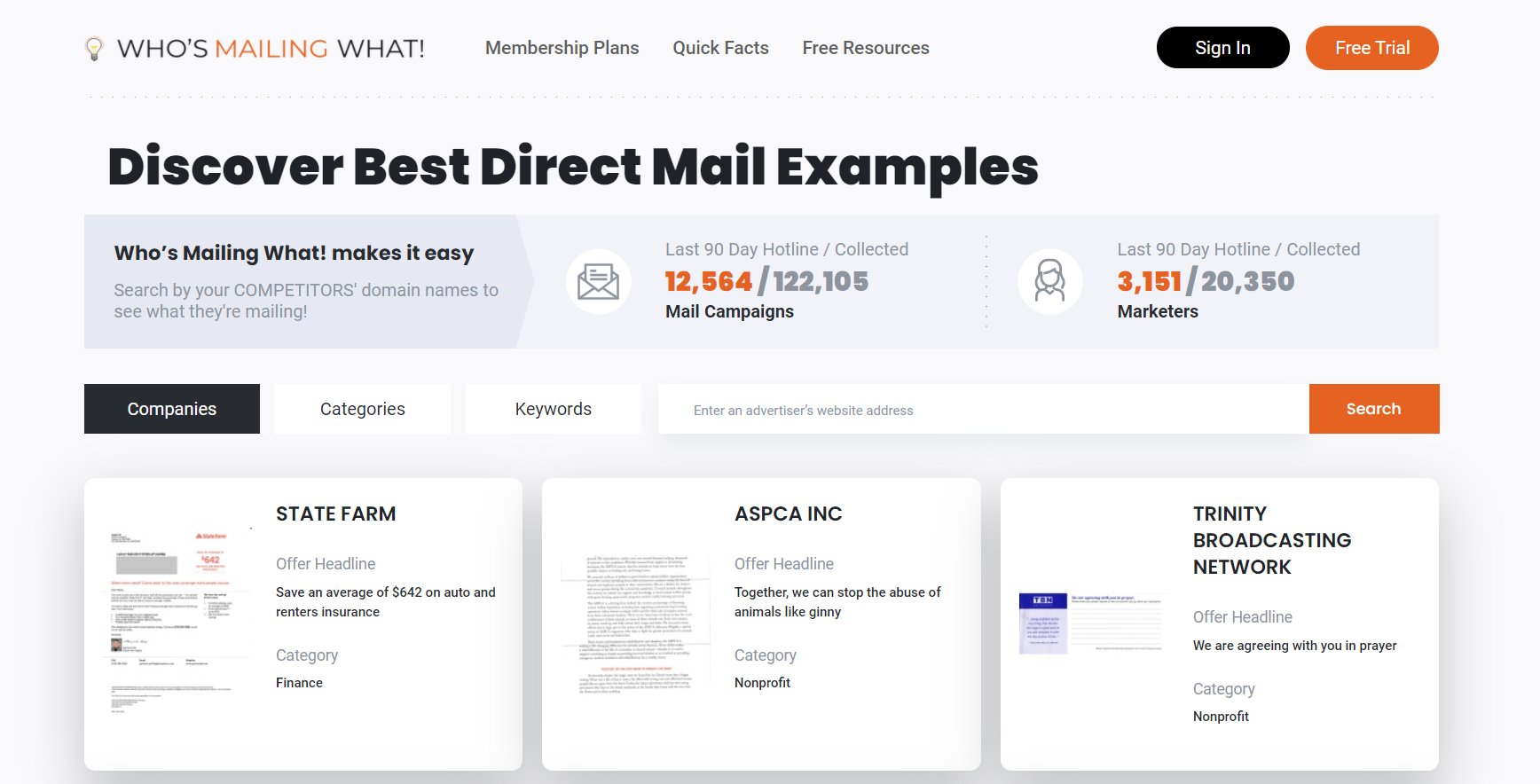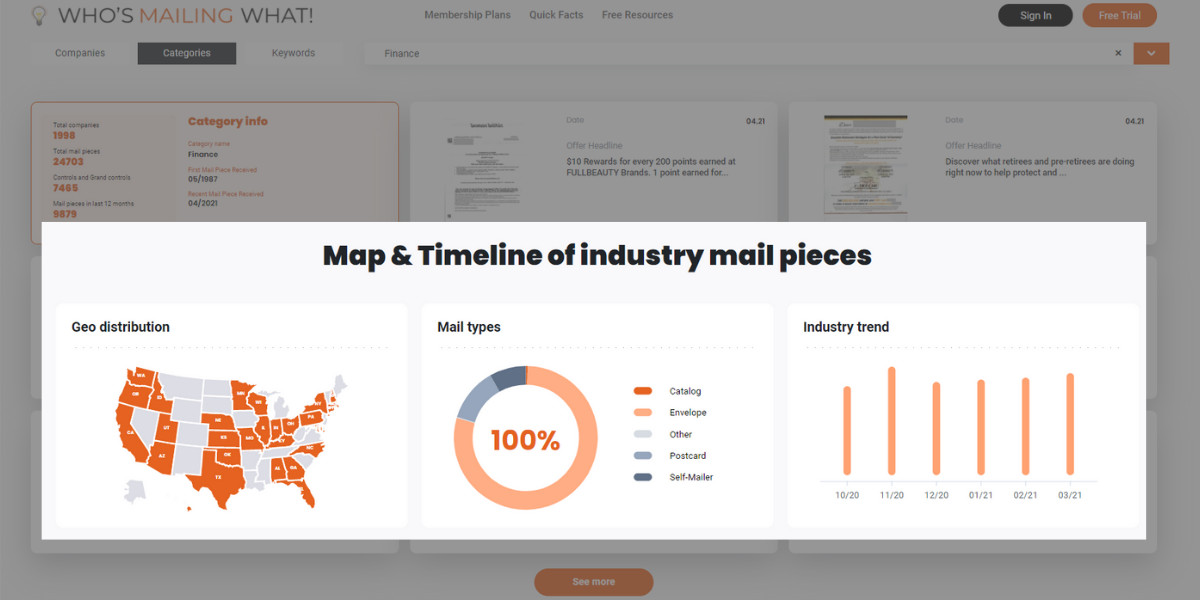TIPS & TRICKS
8 Direct Mail Envelope Ideas to Boost Your Open Rate [+22 Examples]
In this article, we will discuss how you can use these direct mail envelope ideas to increase the effectiveness of your campaign.
Apart from ensuring that the direct mail piece arrives safely, the envelope also serves a very important purpose: Making a good first impression. Getting past the recipient’s initial scrutiny to establish your brand and sales proposition can be challenging, however, there are tried-and-tested strategies that you can implement to successfully get your foot in the door.
Previously, we looked at some of the best direct mail marketing examples from various industries to understand the most common do’s and don’ts about choosing the right direct mail format. In this article, we will discuss how you can use your direct mail envelopes to increase the effectiveness of your campaign.
→ Download Now: 107 Inspiring Direct Mail Ads
 8 Direct Mail Envelope Ideas
8 Direct Mail Envelope Ideas
- 1. Add creative elements as “teasers”.
- 2. Use different colors to evoke an emotional response.
- 3. Consider environmentally friendly printing.
- 4. Hint at an enclosed gift.
- 5. Keep them guessing with a blind envelope.
- 6. Dial-up the emergency factor.
- 7. Choose an unconventional envelope.
- 8. Make it look personal.
1. Adding Direct Mail Envelope Teasers
According to USPS, an average American household receives more than 400 pieces of direct mail every year which has prompted brands to find unconventional ways to stand out from their competition. A promotional envelope pre-printed with unique design elements is an excellent way to make a good first impression, and give people a quick heads up about the contents of the direct mail. For example, Sight & Sound Theatre’s envelope below includes a colorful snapshot of their upcoming play — just enough to pique any receipt’s curiosity — alongside preliminary information like the title and date.

Envelopes with a visual, tactical appeal can also act as an incentive to drive open rates. For example, Alaskan Airlines’ envelope talks about a ‘60,000 Bonus Mile Offer’ that a recipient can take advantage of. The catch? They have to open the mail to know more.
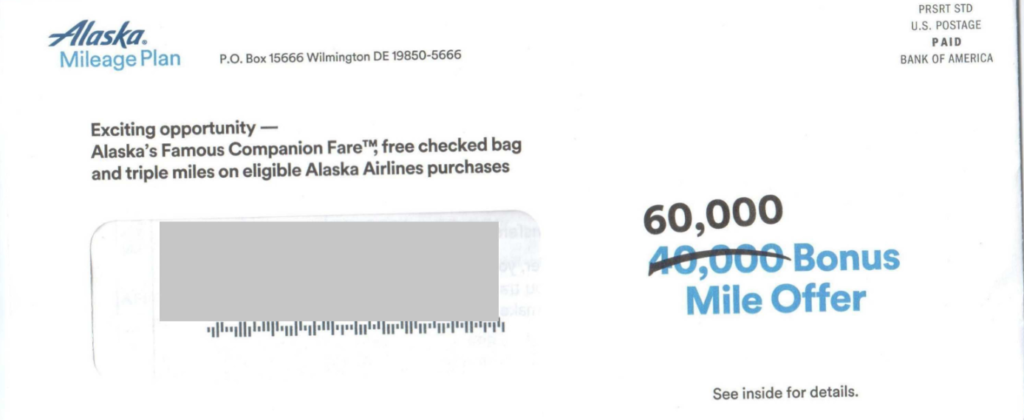
Envelopes with a visual, tactical appeal can also act as an incentive to drive open rates. Similarly, Capital One uses their envelope to promote ongoing, limited-time, exclusive offers (“0% Intro April Until July’21” and “Unlimited 1.5% Cashback on Every Purchase”) to create a sense of urgency amongst the recipients. It’s like telling people — you can avail this discount only if you open the mail right now and take action.
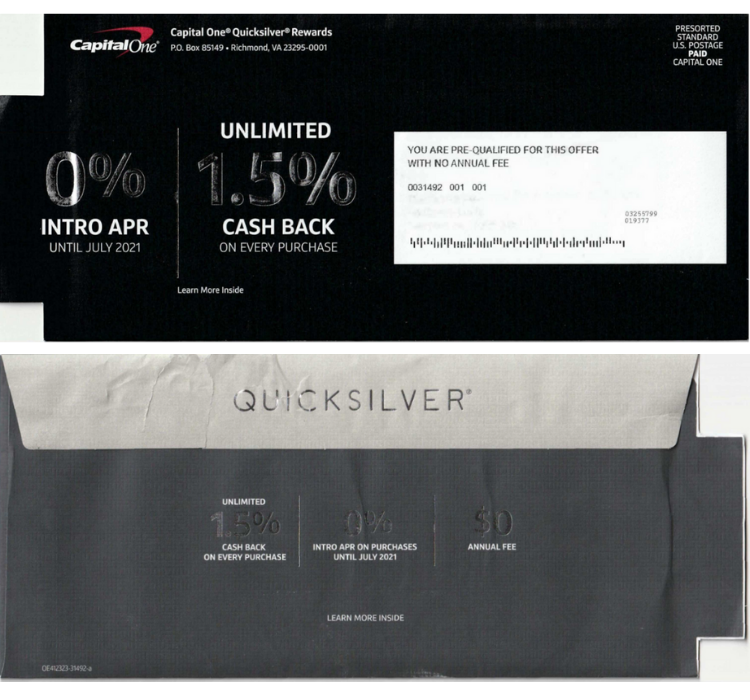
Midnight Call, a nonprofit missionary organization, is another great example. Their envelope includes a short, bullet-point list of the many ways a subscription to their magazine benefits the receipts, including the discounts they are currently offering. You can also see the headlines from their latest issue (“Racing Toward Globalisation – How?”) that give people a quick sneak-peak into the type of content they put out.

Ultimately, you want the outside of your direct mail to be reflective of what’s inside. People appreciate a quick heads up about the contents of the direct mail — a preview of the information they’re going to receive after opening the envelope.
2. Use Different Colors to Evoke an Emotional Response
By incorporating color into your direct mail marketing strategy, you can maximize the impact of your communication and persuade recipients to “act a certain way” in response.
Solid color envelopes are proven to stand out, regardless of their size, and observe higher open rates. However, it’s important to keep in mind that the customer’s response to color appropriateness — does the color fit what’s being sold? — matters way more than the individual color itself. For instance, red elicits strong emotions from people. It increases the heart rate and as a result, works like a charm on impulsive shoppers who are the primary target audience for clearance sales and high-value discounts. For example, Audi uses a red envelope (see below) to invite people to one of their biggest sales events of the season.
The color also stimulates the appetite glands, which explains all the red you see in food and beverage advertisements. Look at Coca-Cola, KFC, Five Guys, and Wendy’s, amongst others!

On the other hand, green is often associated with growth, vitality, and wealth. The color evokes a sense of trust and understanding, making it a popular choice for premium lifestyle brands, financial institutions (check out the envelope from Florida Council for Corporations), and technology companies. Lacoste, Acer, Land Rover, H&R Block, and Nvidia are all great examples.
In some cases, green also symbolizes freshness and nature. The color is a go-to for brands trying to establish themselves as organic, eco-friendly, and outdoorsy — consider Whole Foods, Starbucks, John Deere, Tropicana, and Heineken!

Black symbolizes sophistication, power — and even mystery in some cases. Apart from being a timeless, elegant choice, brands also use the color to come across as high-end, luxurious, and exclusive. The fundraising mail from The Colonial Williamsburg Foundation, a living-history museum and private foundation in Virginia, is a good example of this.
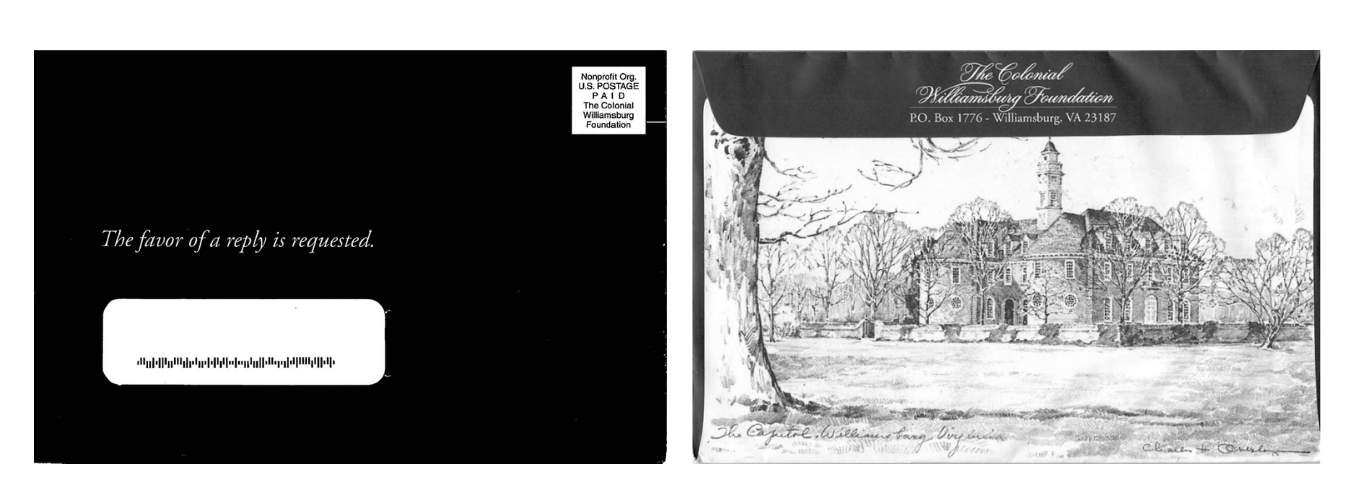
Blue is often associated with trust, dependability, expertise, and strength, therefore, it’s a cult favorite amongst software and finance companies. Consider IBM, Skype, Linkedin, PayPal, and American Express, for example, that use the color across all their marketing collateral. In short, if your business model demands that customers trust you with their money, credit, or data, try blue envelopes to establish a sense of security.
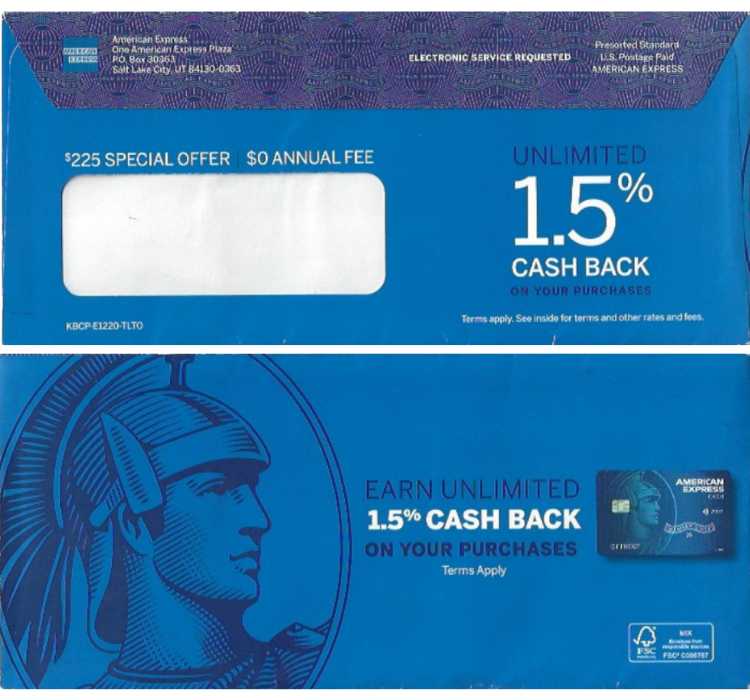
3. Consider Environmentally Friendly Printing
Depending on your campaign requirements, and target audience, there are several materials that you can choose from for a direct mail envelope.
Almost 96% of people agree that personal initiatives like donating, recycling, and ethical purchasing can make a big difference, and 88% want brands to help them make environment-friendly decisions. As a result, many companies prefer eco-friendly direct mail options like kraft (or other green alternatives) envelopes that are not only good for the planet but also perfect for non-foldable items owning to their sturdiness. Consider the following direct mail examples from ZipRecruiter
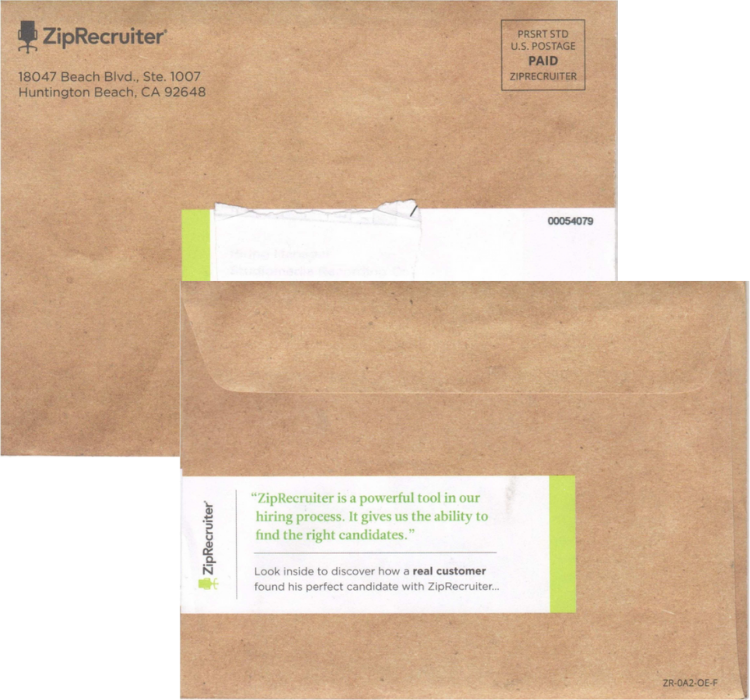
and Natural Resources Defense Council (NRDC), for example.

Not only is NRDC’s envelope 100% recycled, but the window uses glassine instead of plastic.
If you’re using heavy ink designs (that require lithographic printing techniques) on your envelope, you might want to consider calendarized paper (also known as Surfaced Enhanced White Wove) for a smoother finish. There are also tear and moisture resistant varieties to ensure the safe and timely delivery of your direct mail.
4. Hint at an Enclosed Gift
In a direct mail campaign, where the open rate is one of the primary success metrics, a special gift or a freebie reveal on the envelope can be a great incentive for people to see what’s inside. In the following example, Save the Children hint at a free gift for the receipt to emphasize the (10x!) impact of gift-giving during holidays — a message that aligns perfectly with the fundraising drive they are running at the moment.

Similarly, Reiman Publications’ envelope announces “free gift and free shipping” for their preferred customers — who, in this case, are people interested in purchasing their new book.
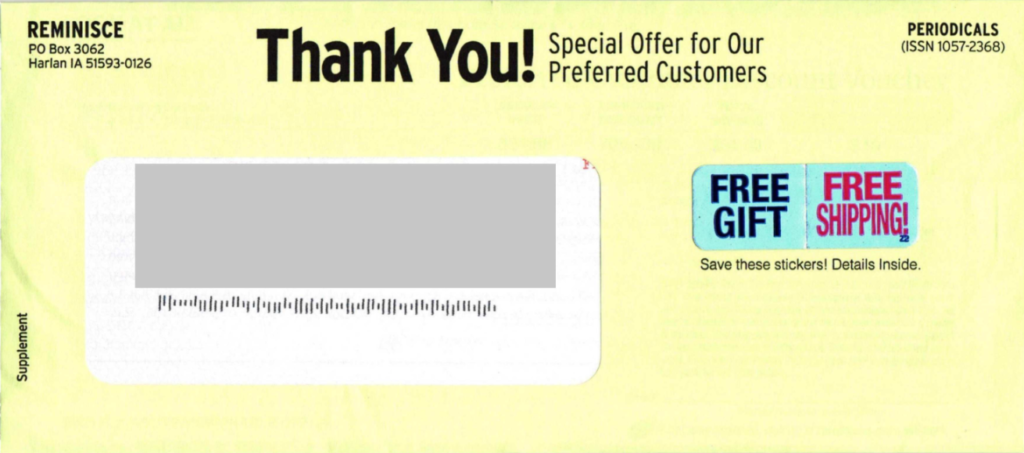
Deluxe Corporation is another good example. In addition to using colored envelopes (something we talked about earlier), they also have signage for a “$50 gift card inside”. In short, both of them persuade the recipient to open and go through the contents of the direct mail.
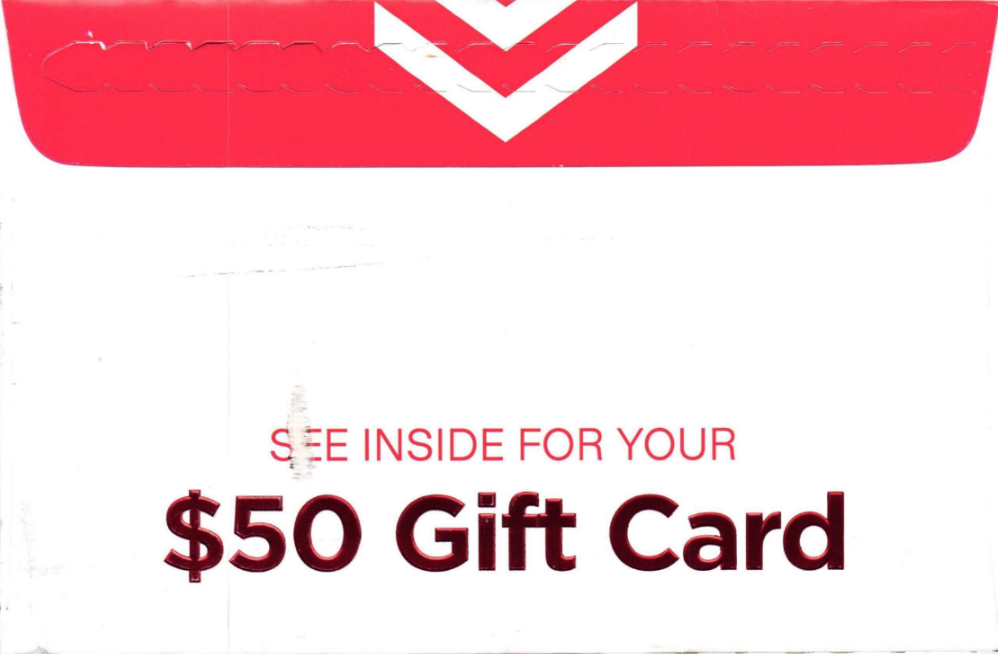
If you’re planning to include a free value with your direct mail, take advantage of the real estate that an envelope offers. By drawing attention to the freebie or a special deal that your company is offering, you are more likely to stand out when people are sorting through the mail pile.
5. Keep Them Guessing With a Blind Envelope
A blind envelope is often a plain white envelope that offers little to no clues about the sender, which means, no logos, no names, and no identifying information. Usually, they have indicia (rather than a stamp), which makes the direct mail seem more “business-like” and thereby, suggesting that urgent matters lie within. For example, look at the blind direct mail envelope from BJ’s Wholesale Club below that is designed to create intrigue amongst the recipients.

Some companies prefer not to completely blindside their receipts and include the basic branding elements on the envelope. Consider the following envelopes from the American Automobile Association and Propel Tax that only feature the company logo and nothing else.
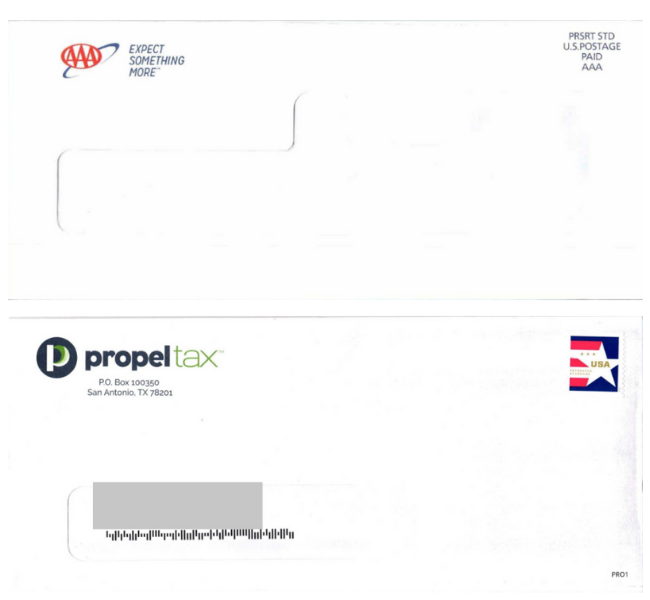
In a previous article, we discussed how capitalizing on emotions for direct mail can motivate your prospects to engage with your business. Whether you’re trying to attract new customers or rekindle your relationship with existing ones, blind envelopes tap into the strongest human emotion — curiosity — to achieve higher open rates.
6. Dial-up the Emergency Factor
Using action-oriented terms or phrases — Hurry! You only have 10 days to respond! Immediate attention needed! — may seem overdone, however, most customers continue to fall for them. The reason is pretty straightforward: Most buyers are aware that in today’s fast-paced market, the clock is ticking. The fear of missing out (FOMO) is real, and by capitalizing on this mindset, you can build direct mail campaigns that invoke a sense of urgency and convince people to “act now”.
Check out the following envelope from the National Vietnam War Museum that informs the receipt that the mail is a “one-time notice only” and contains “time-sensitive contents”. There’s additional signage to indicate that this is a “monitored delivery” that comes with “no deadline extensions” and must be “opened at once”.
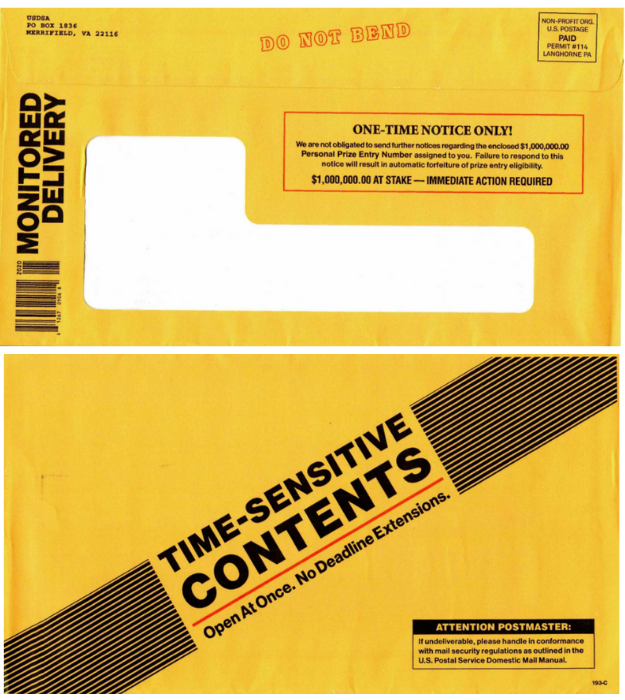
The North Shore Animal League also employed a similar strategy for one of their direct mail campaigns. For starters, the haute pink envelope marked with “urgent” and “$25000 cash award” is enough to draw anyone’s attention, but wait — there’s more. The company also emphasizes that this is a “special notice” and a “non-transferable document”. On the back, there’s signage to warn people to “take immediate action to avoid forfeiture”.
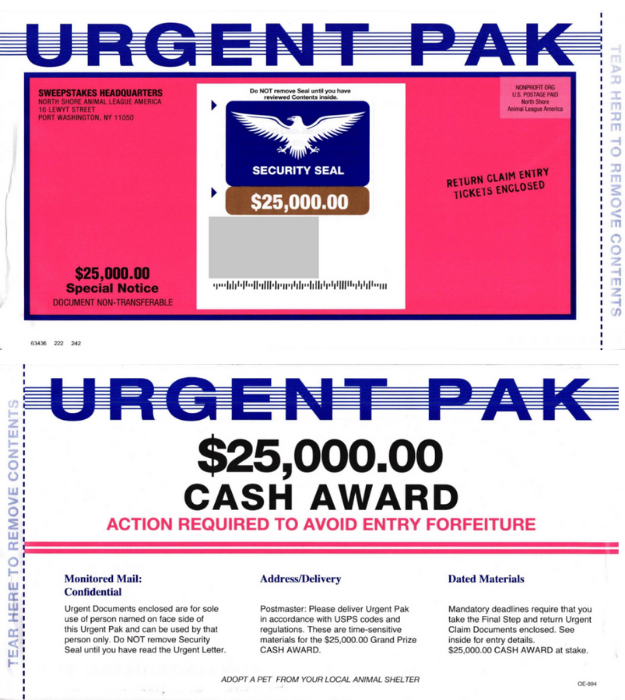
7. Choose an Unconventional Envelope
If you have the room to experiment and are looking to change things up, try giving the less popular envelope options a chance. Companies have been known to have tried oversized envelopes and transparent envelopes for direct mail. Take a look at the following oversized envelope from PETA
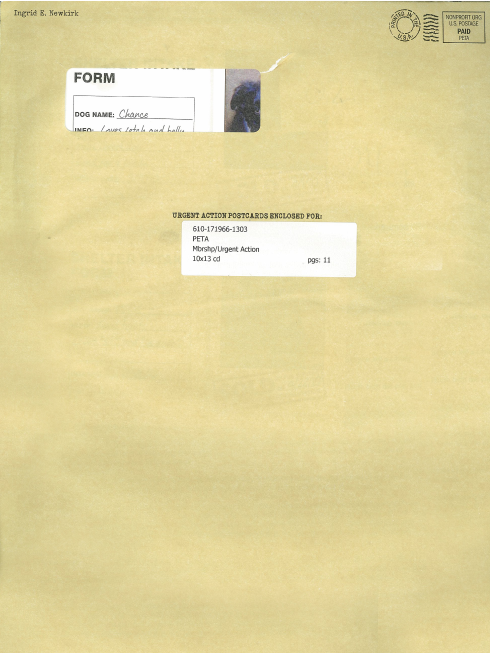
and poly envelope by Rosemont College.

Some companies go with embossed envelopes that use unique paper textures to deliver a high-end look and feel for a fraction of the price. Consider the following mail from Danbury’s Mint, for example.
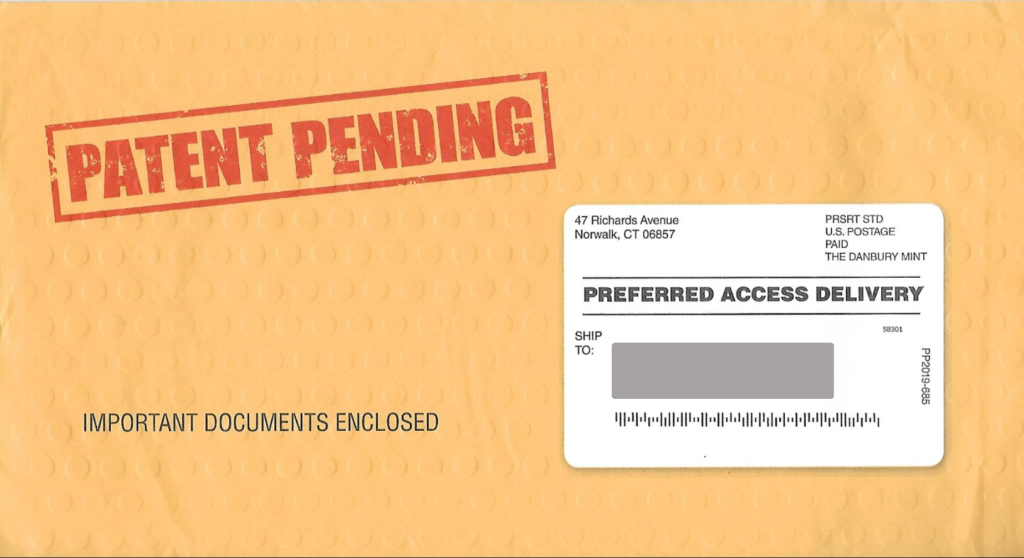
8. Make It Look Personal
You can also personalize your campaign by using direct mail handwritten envelopes. It doesn’t need to be entirely handwritten to do well. Placement is the key — using your handwriting for addresses, signatures, or simply a short, personal note can result in a 5-10% increase in response rate.
Consider the seemingly ordinary envelope from City Union Mission below. The handwriting font (on the back) comes across as more personal when compared to direct mail options using only standard type.

Today, companies are moving away from traditional, and mainstream direct mail marketing strategies to explore unique, out-of-the-box opportunities to stand out from their competition. By opting for a “road not taken” approach with envelopes can be a game-changer for your business.
How to Search For Envelope Ideas on Who’s Mailing What!
Who’s Mailing What! has more than 62,000 envelope examples across several industries (nonprofit, finance, healthcare, entertainment, etc). Let’s take a look at how you can use Who’s Mailing What! filters to find envelopes that other companies are using:
- Click on Search → Direct Mail Filters → Select Envelopes under the Format Type menu.
- Use Industry filters to look at the most popular direct mail envelopes in your industry. You can also sort the results using location, business model, or controls.
Planning a direct mail campaign for your company? See what your competitors are doing!
Try our free Look Up tool to find the best-forming mail pieces from the Who’s Mailing What! repository for inspiration. Sort your search results by keyword, company, or industry to experience a simplified version of our application.
What’s more? When you search by Category, the results include an Industry Insights widget (at the bottom of the page) that features all the direct mail envelopes that have performed well for your industry in the past. For example, let’s select Finance as a Category, in which case, you can see the envelope format that your competitors have had the most success with.
In Conclusion
Envelopes are often the unsung hero of direct mail. After all, what’s the point of allocating time, energy, and resources to a campaign that goes unnoticed simply because the recipient didn’t open the mail? In a way, the success and return-on-investment (ROI) of any direct mail depends on the customers’ response to your envelope.
We hope that the above pointers can come in handy when you’re choosing the envelope for your next direct mail marketing campaign.
















